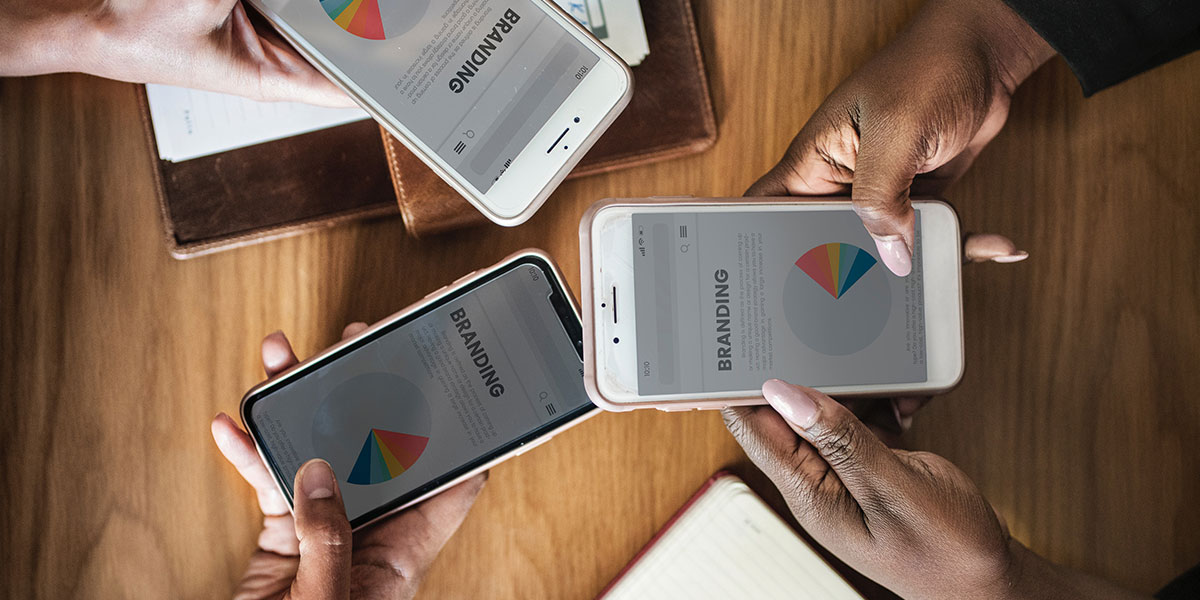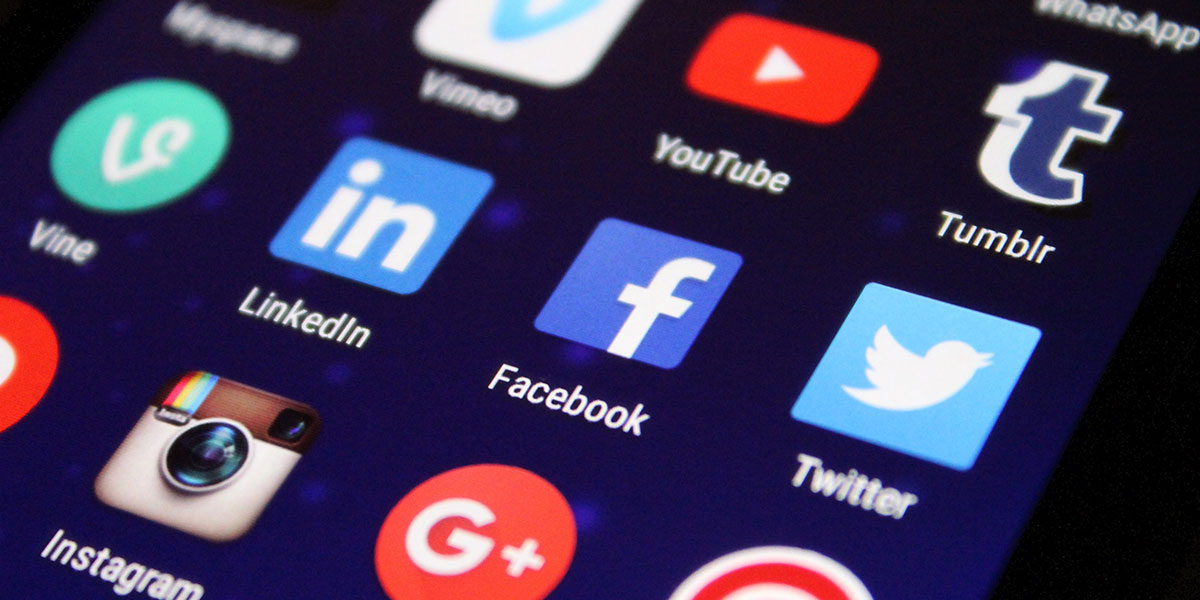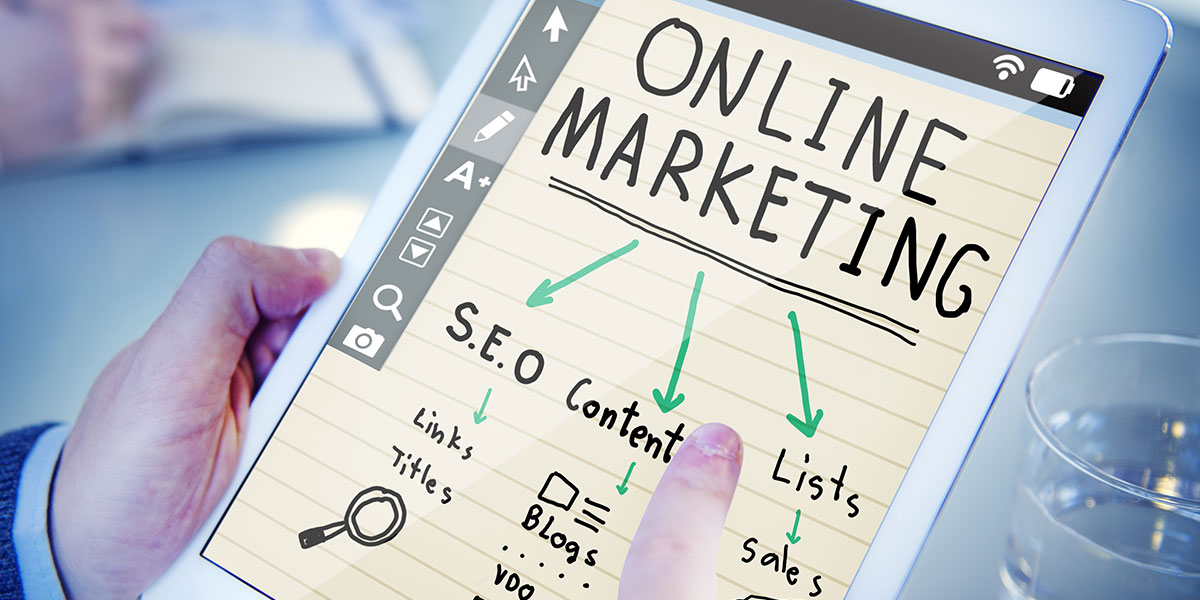So you have a killer logo design, including color and black and white variations, a company color pallet, a typeface, and a stunning website design. Congratulations, you’re ready to leap into the world of digital marketing. Or are you?
Consider: will these elements, stellar as they may be, translate into strong digital branding or if you prefer to call it, internet branding?
This question applies to you particularly if you’re a brick and mortar that is just now transitioning to the online world. But even if you’ve already ventured into the digital marketing world, you may benefit from reviewing the tenants of strong digital branding you’ll find below. Because, as many companies have learned the hard way, there’s more to digital branding than a slick logo.
In this post, we’ll cover several aspects of digital branding that many, many companies get wrong. You see, with the explosion in popularity of social media, many businesses rushed to establish a presence on the platforms that customers use the most. But, by rushing, they overlooked more important aspects of digital branding.
After covering those more obscure, but equally crucial aspects of branding, we’ll look at three companies that got it right the first time to see what we can learn from them.
Read on.

What Is Digital Branding?
The goal of digital branding is first and foremost to create meaningful connections between your company and its customers. Your main tool in this venture is the power of emotion. Through the power of emotion, and emotional storytelling, your customers will come to see you as an entity made up of living, breathing people, rather than as a faceless business.
Consumers prefer buying from companies they connect with on some level over faceless companies that appear to care only about profits.
Secondary to that first lofty goal, the purpose of digital branding is to establish a presence in the digital world—on social media and other places—where real, breathing customers hang out.
Digital branding is the cornerstone of any modern marketing technique. With it, you can communicate your brand’s values and purpose across various digital channels—a potent tool with which you can dominate your more tech-averse competitors. With savvy digital branding and marketing skills, you can engage your customers where they are, which is proving to be useful when marketing to millennials.
With strong digital marketing skills, you can:
• Create brand ambassadors
• Increase sales
Why Does it Matter?
If you want to reach and impact the modern consumer, digital branding is the key. With the meteoric explosion of mobile phone and tablet use, digital branding offers you the opportunity to connect and engage with consumers in new ways. What’s more, consumers are coming to expect more interaction with companies. In other words, ready or not, no longer are you a faceless entity. In today’s economy, consumers expect you to engage with them.
The good news is that there are a variety of ways to connect with consumers, including:
• Mobile apps
• SMS messaging
• Newsletters
• Social media platforms
• Your website
So? Why Should I Care?
Because your competitors do. If you attempt to sleep through this shift toward higher customer interaction, you’ll miss out on the opportunity to build stronger relationships with your customers. Meanwhile, your competitors will enjoy better relationships with their customers—who then may become your ex-customers.
Besides, if you’ve already put in the work to create strong branding, creating a robust online presence is the next logical step.
Okay, What’s Next?
Review your demographic data, including your customer profiles. Who are your customers? What do they do? What need of theirs do you satisfy? Get a laser lock on your target market. Only then can you establish cohesion between your digital branding and your marketing efforts.
Who is your customer, and where do they hang out? Finding the answer to this question should be your top priority. Even for your own personal branding.
Next, move your focus inward. Who are you? What’s your story? What do you stand for? In order to build your brand online, you must be able to answer these questions.
Telling the story behind your brand can help differentiate you in a noisy market, and today’s most popular social media platforms just happen to be the perfect place to do so. What’s more, by sharing the inspiration behind your business, you’re building an emotional connection with your potential customers.

Reviewing The Basics: Why You Need Cohesive Branding Elements
Before you embark on your digital branding journey, you should make sure that your branding elements are cohesive. Put another way, your branding elements should adhere to an overall theme. These elements are:
• The logo design
• Fonts
• Color Schemes
• Message or brand story
For some reason, when some companies seek to establish themselves online, they feel the need to ‘reinvent themselves.’ Most often, this takes the form of a logo refresh. But it may also result in a new color pallet or new primary typeface.
Companies may feel tempted to update their branding because the Internet is so new and shiny, and they, themselves, feel old and stodgy. Whatever the cause, if your branding elements work now, don’t change them. If you’ve built up a solid brand with your existing branding, don’t throw it all away.
But, if you do have elements of your branding that don’t seem to fit or that stick out, it’s time to investigate. If you can’t justify to yourself why that element doesn’t fit the theme, you may need to take a step back and reevaluate your existing branding.
Getting this right in the early stages of establishing a digital brand is paramount. Once you start sharing your content, making guest posts or engaging in other brand-building activities, you’re exposing people to your branding. Therefore, that old cliché applies: put your best foot forward.

User Experience Matters
If you want to establish a strong, compelling digital brand, there are a few things that you absolutely, positively, must have in place. You can get by without one or two of these things for a while, but eventually, lacking any of them will drag you down.
Once you’re sure that you have cohesive branding elements, the next consideration is user experience, or what the stylish kids call UX.
Far too many businesses rush this one, and they pay for it in the form of lost sales.
Remember: modern consumers have short attention spans.
Writing a blog post? You have around eight seconds to grab their attention.
Writing ad copy? You have around eight seconds to get them to click.
Posting a video? You better hook them in the first eight seconds.
So not only do you have to learn how to create compelling, gripping content, but you have to make it accessible within a minimum of friction. In the UX world, friction is an element of the design that prevents a visitor from getting what they want.
How often have you visited a blog post because it was on a topic you wanted to learn more about, only to be interrupted a few seconds in because of a pop-up window begging for your email address? That’s friction.
Slow-loading site? That’s also friction. The thing about friction is that it can come from many sources, and it adds up.
If potential customers can’t get at your content quickly, they’ll give up in frustration. But consider: they were probably looking for information on your product, or were hoping to solve a problem that your product could tackle. But because there was friction in your UX, they’ll now end up on your competitor’s site.
Before jumping into digital branding, ask yourself two crucial questions:
• Is your website fast? How long does it take to load?
• Is your website responsive, and is it optimized for mobile?
Think about it: whatever digital marketing techniques you employ, you’ll be driving traffic back to your website. What is the point of establishing a social media presence or advertising online if your site is so slow that people bounce as soon as they land on it?
Your website is the hub of everything you do online, and as such, it’s the heart and soul of your digital branding efforts.
Your UX determines the users’ impressions of your website. This impression forms based on several factors, all of which you must seek to optimize over time. When you improve UX, you create a more appealing corner of Internet real estate, and your customers will enjoy their time there. For instance, if you streamline your checkout process, visitors will be more likely to buy from you again.
If the only difference between you and your closest competitor is that you have a significantly better UX, you will begin to edge them out.
Too many businesses want to build a presence online before they’ve done the more boring—and sometimes costly—work of optimizing their user experience. But smooth UX will guide potential customers through the conversion funnel, and that, in turn, is what makes your digital branding efforts worthwhile.
Remember the fewer obstacles your customers encounter on their way toward making a purchase, the more likely they are to buy, and the more likely they are to shop at your store in the future. And this can be identified as digital branding mistakes if not looked at and understood.
There are wider implications of having optimized UX to consider. For instance, imagine a customer landing on your site for the first time. Assume they’ve landed on one of your more popular blog posts. If they like the layout of your site and can navigate easily, they’re more likely to follow you on social media. This, in turn, makes it more likely they’ll come back to your site sometime in the future. If they come back often enough and keep consuming your doubtless quality content, they’re more likely to tell a friend about your blog. Just like that, you’re generating free word-of-mouth traffic.
When evaluating your UX, consider the following, at a minimum:
• Your website should be responsive and mobile friendly. More and more consumers consume online content through mobile devices and tablets. You can’t afford to ignore this trend—it isn’t going away.
• Your website should load completely within a few seconds. Average loading times in 2018 were around 20 seconds. But many mobile users will leave if your page takes longer than three seconds to load.
• Don’t use multiple CTAs—calls to action. Using a CTA is a great way to spur a customer to, well, take an action. But multiple CTAs on the same page is bad UX. Don’t nag your visitors. Instead, make sure your content is useful and of high-quality, and then use your CTA strategically. After you solve their problem, then ask them to take action. Not before. Not during.
• Break up your page into multiple elements. Nobody likes to read a wall of text. Break up long paragraphs into smaller paragraphs, and use images where appropriate. Paragraphs for online content should be shorter than what you might find in a print non-fiction book. Aim for a few sentences at most. Long paragraphs are extremely intimidating on mobile, and they discourage busy readers.
• Use software, such as Crazy Egg, that provides you with heat maps of where visitors are clicking. Heat maps are incredibly useful for optimizing your UX. Heatmaps show you where your users are putting their cursors while on your page, and where they’re clicking. By analyzing your heatmap, you can make improvements in your site layout that will help customers get the information they want faster.
If none of this is in your wheelhouse, and you’ve already allocated money to a digital branding campaign, consider using the funds to hire a professional to optimize your UX instead. Especially for your corporate branding.
For inspiration, check out these examples of incredible website UX:
• Lyft
• Apple
• Purple
• Adobe
• Slack

Social Media Etiquette Matters
Digital branding involves posting to social media sites—a lot of posting, in fact. It’s just one of those things you’ll do as you establish your online presence. But just because you have to do it doesn’t mean you should use a shotgun approach. Each platform is different, and each caters to a certain type of consumer. For instance, if you try to use a strategy that works well on Instagram on Twitter, you may get a frosty reception.
In addition, many companies make the mistake of spamming potential customers. Don’t do this.
One aspect of your digital brand is your online reputation, and one thing about the Internet is that it has a long memory. So even though individual consumers have short attention spans, the Internet won’t forget any blunders you make.
There’s a certain online etiquette you should follow when posting on social media, and much of it is outside the purview of this humble guide. But here are a few key points:
• Don’t just share your own content. A solid rule of thumb is to maintain a healthy ratio between self-promotional posts and posts in which you share other people’s content. A good starting place is a ratio of 5:1. That is, for every self-promotional post you make, post other people’s content five times.
• Don’t get into petty squabbles. Netflix might be able to get away with it. You aren’t Netflix. When engaging online, make it your focus to share posts that illustrate your brand values. Don’t get into debates or get involved in culture wars.
• Keep business and personal accounts separate. You’ll want to keep your company’s social media accounts and your own personal accounts separate. This way, you can be more consistent. On the whole, you’ll want to only post content that is relevant to your industry or customers when posting from company accounts. This would also keep you from making too many digital branding mistakes.
Must-Use Platforms in 2019
No, you don’t have to use all of these platforms, but these are the most popular and effective in 2019, by far. Remember what we said about not taking a shotgun approach? Here is where you can become a social media marketing sniper, learning what each platform is good for.
#1 Pinterest
Pinterest is a very niche platform that nevertheless has a large user base. It’s a site that allows users to easily share pictures in posts called ‘pins.’ Pinterest works well for businesses with a strong visual aspect to them, such as florists and bakeries.
Note, however, that the Pinterest user base skews heavily female.
Pinterest takes some time to set up, but it can be a powerful traffic driver. Create boards and get pinning. The more engagement you get on your boards overall, the more traffic you’ll get back to your site. Don’t forget to share other people’s content too.
#2 Twitter
Twitter is a fast-moving, real-time news and conversation platform. Twitter is a platform that encourages high engagement from its users, and because of this, many businesses use it as one aspect of their customer service toolkit. You can also use Twitter to elicit customer feedback—just be careful what you wish for.
A company Twitter account with many active followers can expect to generate decent traffic over time.
#3 LinkedIn
This is a social media site for professionals, and as such, it is quite different from the other popular social media sites. Obviously, you can use LinkedIn to recruit talented help, but you can also use the platform to generate traffic back to your site by posting informative content. LinkedIn has more of a captive audience than does, say, Facebook. Use this to your advantage by creating high-quality content aimed at professionals who would benefit from your product or service. But don’t let your posts turn into commercials or you’ll lose your audience fast.
#4 Instagram
Instagram is the current darling of social media marketing gurus. It’s a platform with a large user base, and that user base tends to engage quite a bit. In the right hands, Instagram is a very powerful brand-building platform. It’s great for generating word-of-mouth advertising and for drumming up engagement. Use Instagram is to humanize your business by sharing photos of your employees at work and play. Consumers love this.
#5 Facebook
Facebook is still very relevant in 2019, despite its recent controversies. Your customers are on Facebook, so there’s that. It remains a good site for generating clicks and for brand building.

Don’t Forget Emotion
Many companies, when they set out to create a digital brand, forget the most basic tenant of marketing: you must trigger an emotion in your potential customer if you want them to take a specific action.
How you evoke emotion in your audience colors how they respond to you, and what they think about you. This doesn’t mean you should spend all your time coming up with clickbait headlines for your blog, but you should ensure that your voice, messaging and identity are emotionally charged. To do that, you must answer the following question:
Who are you as a company?
Some companies, like Reebok, bank on nostalgia, and their messaging reflects this. Other companies that have been making good use of nostalgia marketing include:
• Coca-Cola
• Old Navy
• Spotify
• Pepsi
• Nickelodeon
• Nintendo
Others, like Disney, cater to amusement seekers and the emotions they wish to experience: fun, exhilaration, freedom.
But if you look at the digital branding elements of any of the above companies, or at any of their marketing materials, you will find that it’s all charged with emotion of one sort or another.
Digital marketing can be a very impersonal experience. There’s a screen between you and the user, and you’re competing with SMS messages, emails, videos and everything else contained within that screen.
If you want to shorten the distance between you and the user, you must incorporate emotion into your digital marketing materials.
The most effective marketing campaigns play on our most visceral emotions. Emotions like:
• Sadness
• Capacity to feel empathy
• Happiness
• Anger
• Surprise
• Fear
People learn to tune out digital advertisements after regular exposure to them, but most people remain receptive to emotions and emotional storytelling. Using emotion in your digital marketing allows you to create materials that are high-impact and engaging.
Emotional campaigns outperform non-emotional campaigns every time. The key is to strike a balance between being engaging and being manipulative.
O2, once known as BT Cellnet, was at one time a troubled business. However, things changed for them when they launched their Freedom And Enablement campaign. This campaign used emotions well, and it’s one worth studying.
Procter & Gamble are masters of emotional storytelling. Just look at their 2012 Olympic advertising campaign, with its implication that mothers of Olympic athletes are just as vital as the athletes themselves.

More Examples of Digital Branding Masters
The following three companies have excelled at establishing digital brands. They all have:
• Cohesive branding elements
• Good user experience
• Strong and varied social media presence
• Emotional marketing campaigns
Let’s look at each to see what we can learn from them.
Zappos
Zappos is a leader in the shoe e-commerce market. They have long been considered the gold standard in online customer care. Their innovative return policy comes with 365-day money back guarantee, and they pay to ship both ways. This revolutionary policy was a hit with early adopters, and it spurred massive amounts of valuable word-of-mouth advertising.
We should all take note of their focus on their customer’s wants and needs.
What else can we learn from Zappos?
That content marketing is most effective when combined with a good overall reputation and strong word-of-mouth advertising.
American Express
American Express didn’t just create a presence on social media, they built their own highly trafficked content hub. Their Open Forum website allows industry experts to post content in exchange for a link back to their site.
The website is a popular destination for entrepreneurs, and American Express pays nothing for the content. If your website receives a good amount of traffic, consider inviting industry experts to guest post. This can help expose you to new audiences—and many of these people may be potential customers.
Mint
Entering a crowded market like the personal finance software space is a challenge for any entrepreneur. After all, you’re going up against the established ‘go-to’ solutions. But Mint proved that it’s possible to not only stand out in a crowded space but to flourish.
When Mint came on the scene, there were plenty of strong contenders for best financial tracking tool on the market, but there were few high-quality money-management tutorials online. Customers had questions about how to manage their money, and Mint was there to answer them.
Consequently, they became a trusted source of financial advice. They also just so happened to offer a nifty finance tracking solution—and consumers took note of that, too. Their strategy worked so well that Intuit purchased them for $170-million.
There’s no doubt that content marketing represents a serious investment of time and energy, but it can pay huge dividends.
What questions do your customers have?
I hope you’ve enjoyed this concise guide on digital branding mistakes and how to avoid them. If you have any questions or comments, let me know in the comments section below!

